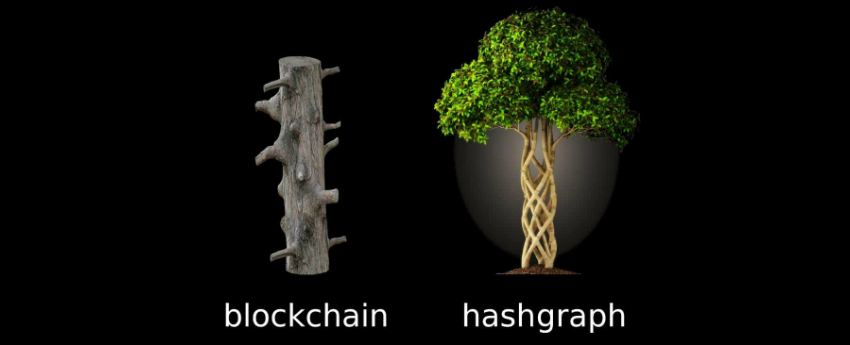Has blockchain become obsolete? Hashgraph may take its place
Has blockchain become obsolete? Hashgraph may take its place
We recently wrote about blockchain: the technology behind the (in)famous Bitcoin. It seems to have a competitor now – what is hashgraph and why can it take the place of the less effective blockchain?

After the economic crisis in 2008, people began to lose their faith in centralised banks. That’s why blockchain technology could be invented in order to create a decentralised and secure system to handle different kinds of transactions. You can read about the technology on our blog already, for example, in these two articles:
However, a new competitor appears to be able to put an end to the dominance of blockchain. The technology is called hashgraph. Experts believe that hashgraph can be better than blockchain, because it is faster, more secure, and more efficient than the technology behind Bitcoin.
Hashgraph: the future of decentralised technology
So how does the new technology work? Actually, hashgraph was created in order to make up for the things blockchain lacks. An important feature of hashgraph is the fact that the blocks created do not form a linear chain, but a network. Validation do not come from the encryption of the previous block only, but also that of additional blocks in the network. This means that similarly to blockchain, hashgraph is also a decentralised technology (distributed ledger), but the consensus mechanism and the storage of transactions are faster, more efficient and safer than in the case of blockchain.
Let’s see the two major components of the technology:
Gossip protocol
Hashgraph is based on the so-called gossip protocol. This means that one node on the network randomly selects another node and gives it all the information the other does not yet know. When the two nodes on the network already have shared information, they can be given information that is already coming from a third node, and so on. This is how a "gossip network" is created, which can lead to complete decentralisation. Nodes on the network get more and more information. All information and transaction exchange is recorded, and the recorded event will include all previously shared transactions, too (the name hashgraph also comes from this because they do not only share an element on a chain, but a full graph). So the result is a complicated but secure network in which transactions are not placed on a linear chain but can be found at many points on the network.
Virtual voting
The next step is to achieve validation and consensus, which is also different from the technology known from blockchain. The consensus is created by the nodes which use a virtual voting system. This is extremely straight forward, as it can be known for sure what information a particular node has, and exactly when it got hold of that information.
The benefits of hashgraph
As we have mentioned before, because of the problems listed above, blockchain technology is starting to become obsolete. Hashgraph has a great number of advantages compared to it.
Cost-effectiveness
Bitcoin mining requires extremely powerful servers, whose maintenance takes up a lot of money.
For the operation of the hashgraph, however, there is no need for large amounts of electricity and money, since it does not require any specific hardware (like a Bitcoin mining machine). Achieving consensus is much faster and more automated than in the case of blockchain, so less energy is needed, which makes the technology much cheaper.
Speed and efficiency
The most important advantage of hashgraph compared to blockchain is that it is much more effective. This may be because the blocks on the blockchain are not connected in a way to create a network, but are connected to each other in a linear way. So if two different blocks are generated at the same time, both cannot be chained, so one of them eventually "falls out" from the system. With hashgraph, because of the multiple connection points, this cannot happen.
Fairness
One of the biggest disadvantages of cryptocurrencies created with blockchain technology is that miners themselves place the transactions on the blockchain manually. So they can select the transactions that are most beneficial to them, so not everyone is "starting with equal chances." In addition, each transaction involves a certain transaction fee. However, many users choose to pay more in order to ensure if it is their own transaction that is added to the blockchain.
However, by using hashgraph technology, validation is more automated and also faster, thanks to virtual voting. The transaction which first receives 2/3 of the votes is placed onto the graph first. Then the system goes on to the next transaction and so on.
So now is hashgraph the new blockchain?
As you can see, hashgraph can actually take the place of blockchain technology one day, since it provides faster, more secure and fairer transaction management. However, whether people will actually use hashgraphs in real life is still questionable. The technology is still in the experimentation phase; first, you need actual applications and public networks in order to test the technology in a real-life setting.
Source: Medium, Portfolio, The Windows Club


